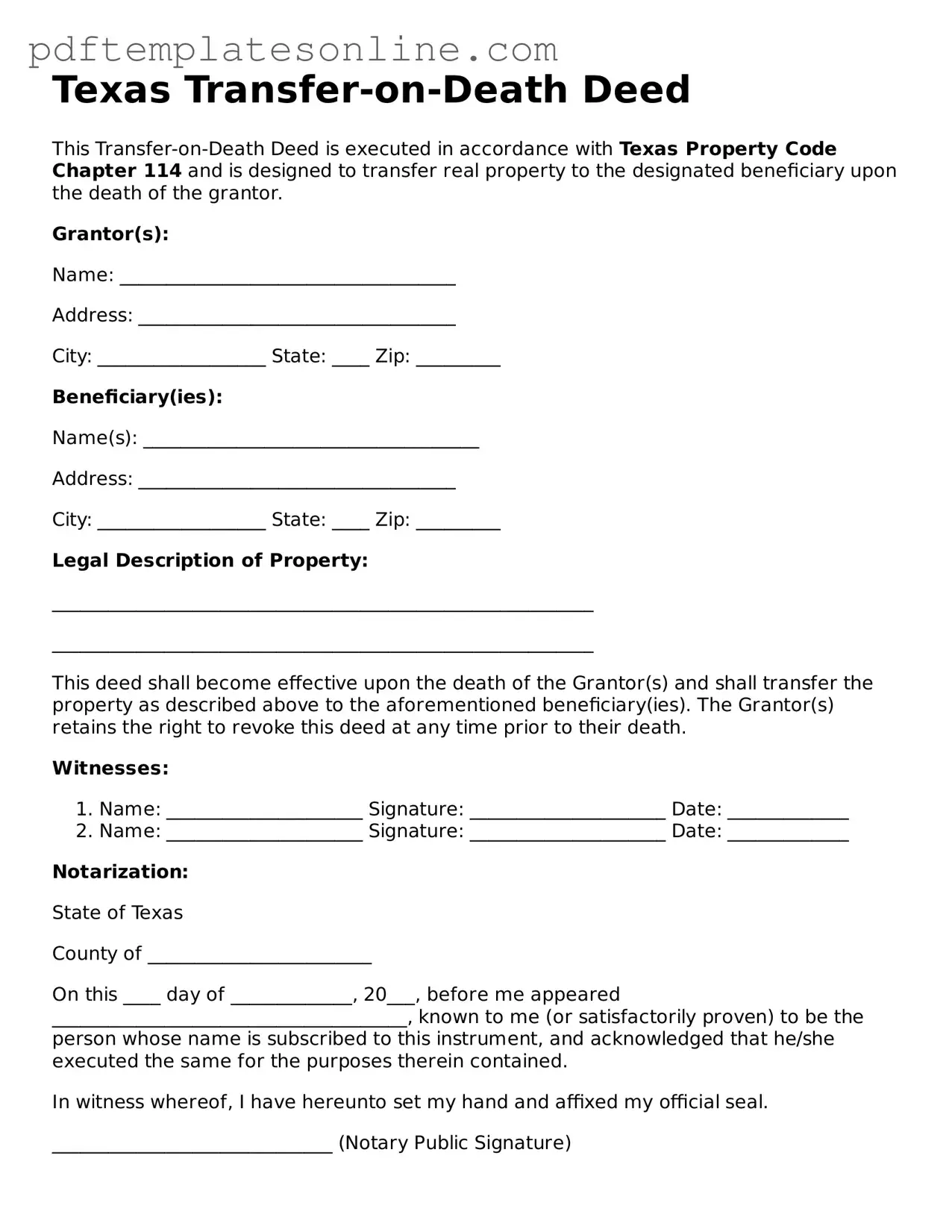Filling out the Texas Transfer-on-Death Deed form can be a straightforward process, but many individuals make critical mistakes that can lead to complications later on. One common error is failing to include the legal description of the property. This description must be precise and should typically be taken from the property’s deed. Without it, the deed may not be enforceable, and the intended transfer could be challenged.
Another frequent mistake is neglecting to sign the deed in front of a notary public. While it may seem minor, the requirement for notarization is essential for the deed to be valid. If the signature is not notarized, the deed may be deemed invalid, preventing the intended beneficiary from receiving the property upon the owner’s death.
Many people also overlook the importance of clearly identifying beneficiaries. It is not enough to simply name someone; the deed should specify whether the beneficiaries are individuals, entities, or a trust. Ambiguity can lead to disputes among potential heirs, complicating the transfer process and potentially resulting in costly legal battles.
Additionally, individuals often forget to review the deed for accuracy before submitting it. Simple typographical errors or omissions can have significant consequences. For instance, misspelling a beneficiary’s name or incorrectly entering the property address can create confusion and may even invalidate the deed.
Finally, some people fail to record the deed with the county clerk’s office after it has been properly filled out and signed. Recording the deed is a crucial step in ensuring that the transfer is recognized legally. Without this step, the deed may not have the intended effect, leaving the property in limbo and potentially subject to claims from other parties.
